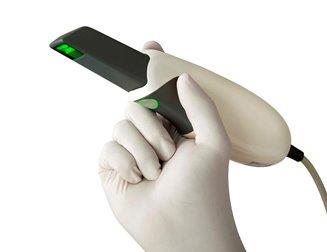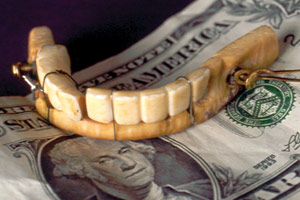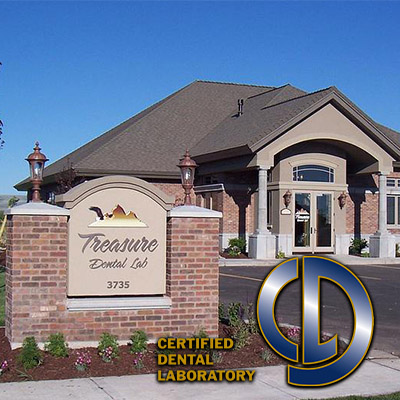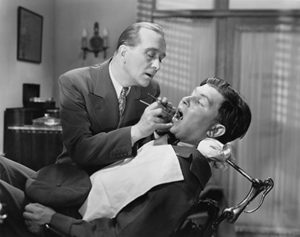 Dentistry, in general has made significant advancements with the techniques and technologies dentists use for dental care. Cosmetic dentistry is no different. The advancements in science and technology has given patients a lot of choices when it comes to procedures to enhance their teeth’s appearance and health. Teeth whitening, veneers, and dental implants are just a few procedures of cosmetic dentistry that were improved with these innovations.
Dentistry, in general has made significant advancements with the techniques and technologies dentists use for dental care. Cosmetic dentistry is no different. The advancements in science and technology has given patients a lot of choices when it comes to procedures to enhance their teeth’s appearance and health. Teeth whitening, veneers, and dental implants are just a few procedures of cosmetic dentistry that were improved with these innovations.
Over the past 2,000 years hundreds of thousands of hours have been spent researching and studying the science of cosmetic dentistry to reach the point which we are at now. From ancient people using tools as simple as sticks to clean out their teeth, dentists using UV rays to whiten teeth, cosmetic dentistry has definitely come a long way through this evolution.
Ancient Cosmetic Dental Practices
Documented evidence of ancient cosmetic dentistry practices is hard to come by. There is little to no evidence of people using elaborate tricks to maintain the health and beauty of their pearly whites. However, there are a few evidences which prove that people from as early as 700 BC started using primitive kinds of dentures. These dentures are crude replacements that are made from ivory and bones (usually from animals and sometimes humans). Some dentures are even made from animal and human teeth. These teeth are either extracted from the dead or sold by live donors. Although popular, the use of these kinds of dentures was discontinued because of the rotting smell and discoloration that take place over time.
Improvements first appeared in 200 AD when the Etruscans started using gold for dental restorations. These ranged from golden dental crowns to dental bridges. Ancient Egyptians chose a more brutal and painful teeth replacements by hammering seashells into their gums.
Evidences of early forms of toothpastes appear to come from when Egyptians used a mixture of pumice stone and vinegar which helps them remove stains from their teeth. On the other hand, Romans used a similar mixture but mixed with urine. As repulsive as that may sound, ammonia is actually a very good natural tooth-whitening chemical that continued its presence well into the 20th century.
Cosmetic Dentistry Gets Hairy
At around the year 1130, barbers, who were more popular for their hair grooming and shaving skills, started delving into the world of dentistry. At first, they just assisted in dental procedures. Then, they started to get the hang of it and formed a guild of barbers specializing as dental surgeons and dental hygienists. However, their untrained knowledge only went so far. They mainly used acid to whiten teeth. The acid, unfortunately, did more damage than any good. The tooth enamel was destroyed, therefore corroding and weakening the tooth. By around the 1400s, barbers were no longer legally allowed to perform dental procedures. However, they still offered it underhandedly.
The Golden Age of Cosmetic Dental Work
Significant improvements happened over the next several years. Experiments in the field of cosmetic surgery became more prevalent. The 1400s saw Europeans carving dentures from bones and ivory. However, since they were just starting to catch on, the dentures that they made were extremely uncomfortable. Years passed and experiments continued. By around 1700, dentures out of human teeth became a fad. Still, these replacements were uncomfortable and unhealthy.
In the next century, they started turning to inorganic materials such as metal and plastic. Metal replacements were experimented on during the 1800s but they faced more complications due to the metal’s taste and overall cleanliness. Metals also presented more health risks. Vast improvement was seen during the experimentations in between 1700s and 1800s.
1770 was when the first porcelain dentures made their debut. Making it took 10 years though but it paved a way to bigger and better innovations in the field of cosmetic dentistry. Dentists learned that they needed a mold of their patient’s mouth to make sure that the dentures they make are a perfect fit. They started using a form of plaster to bring these molds into fruition. By the start of 1800s, porcelain dentures made their way to the USA.
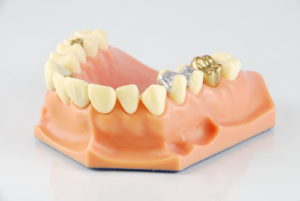 The field of dentistry blossomed during the 1800s because of porcelain teeth. Vulcanite, a rubber material that was used to make wearing dentures easier, was invented during these high times to accompany the popularity of porcelain dentures. In 1903, the use gold fillings started losing ground because of the more popular and more aesthetically pleasing porcelain jacket crowns. These porcelain jacket crowns are less obvious than their golden counterparts.
The field of dentistry blossomed during the 1800s because of porcelain teeth. Vulcanite, a rubber material that was used to make wearing dentures easier, was invented during these high times to accompany the popularity of porcelain dentures. In 1903, the use gold fillings started losing ground because of the more popular and more aesthetically pleasing porcelain jacket crowns. These porcelain jacket crowns are less obvious than their golden counterparts.
In the early 1900s, dental labs found more accessible replacements for porcelain. The abundance of plastics and acrylics paved way for dental labs to introduce a better version of dentures. Acrylics are actually so effective that they are still used in some cases today.
Modern Day Improvements
Early procedures and machinery were not as effective as the dental labs and dentists had hoped for. In addition to that, pain was also a big factor. That is why they started to focus on providing dental enhancements that focused on the reduction of pain.
The first improvements were seen in the field of teeth whitening. Dentists experimented with a mixture of different chemicals and bleaching agents that yielded varied results. In 1989, two dentists found the perfect solution. carbamide peroxide was found to be the most effective whitening agent and the rest was history.
Eventually, dentists moved on from chemicals to the usage of lasers. In 1996, the usage of dental laser combined with whitening agents became popular. The laser provided enough whitening power that procedures would last for approximately an hour. Millions of procedures have been done successfully since its conception.
Over the years, dental fillings, veneers, and implants were invented for use in movies by actors and even in ordinary life by average Joes. From sticks to lasers, the dental field has definitely come a long way. It is incredible how the many dental procedures today contribute to, not only the aesthetic appeal, but also to an individual’s overall oral health.
While there have been incredible advancements in this field, we continue to build upon that progress in search of even better, faster, and more cost-effective ways to deliver high-quality cosmetic dentistry. As an established cosmetic dental lab, we strive to continue to engage in learning and development in the industry. If you’d like to learn more feel free to get in touch with us.

